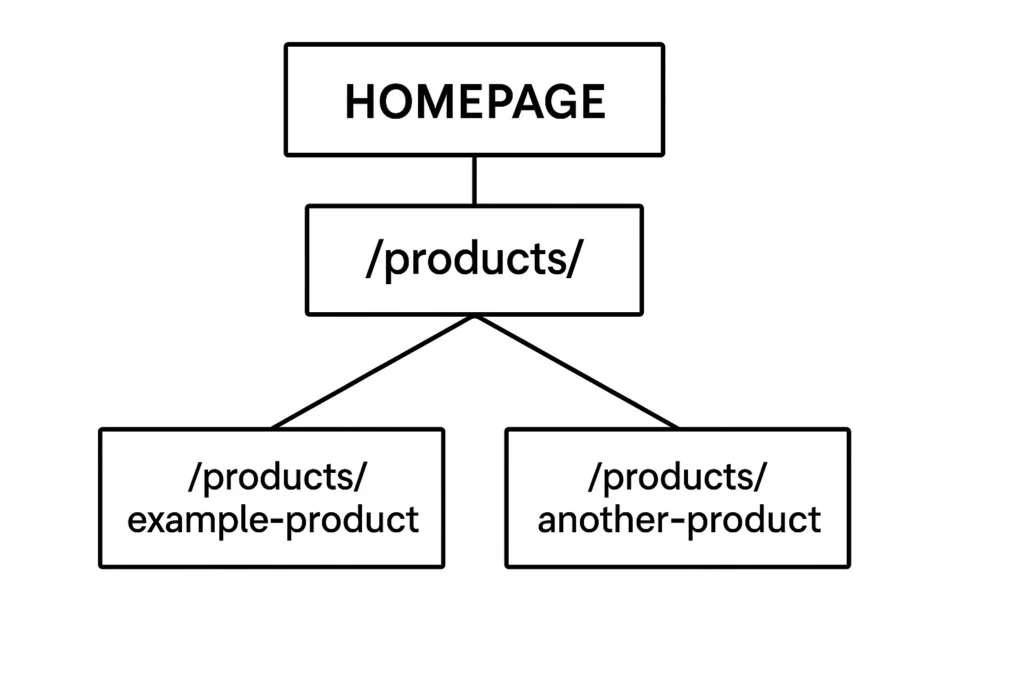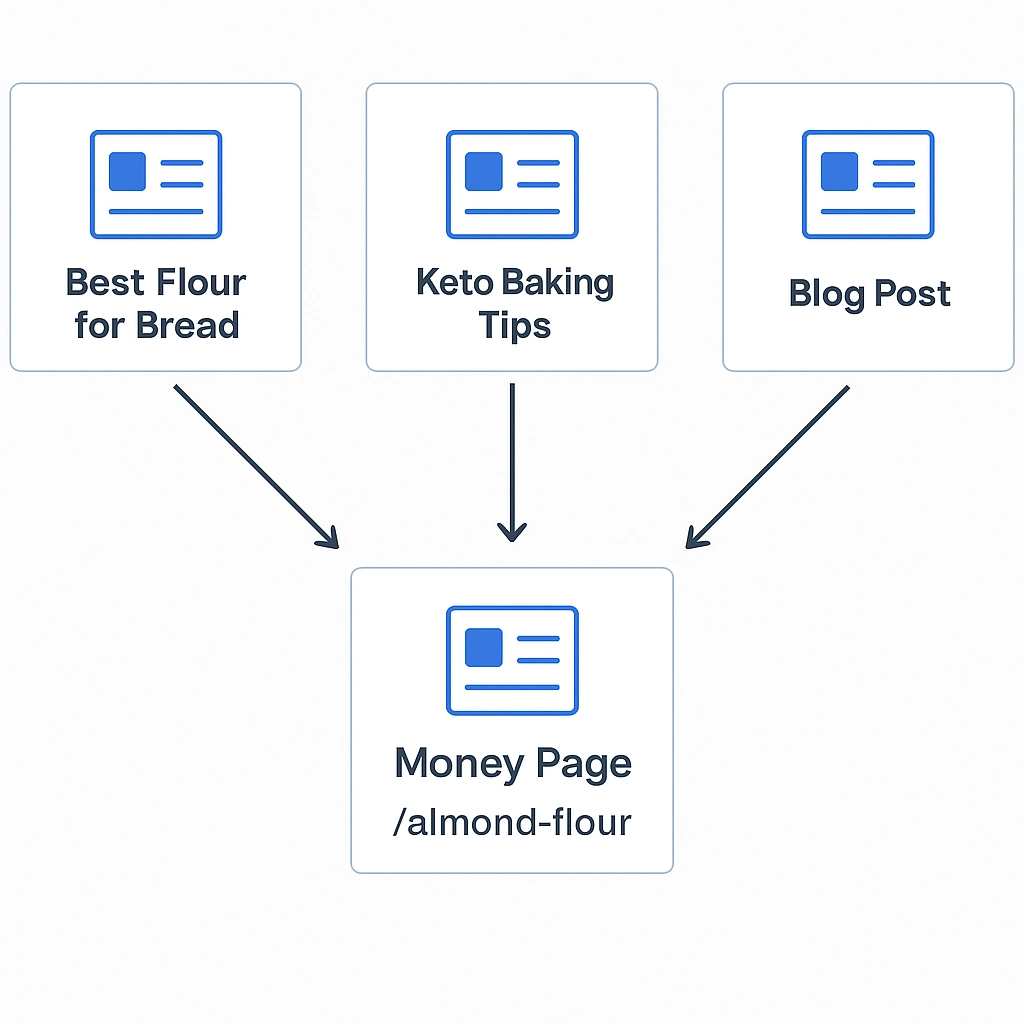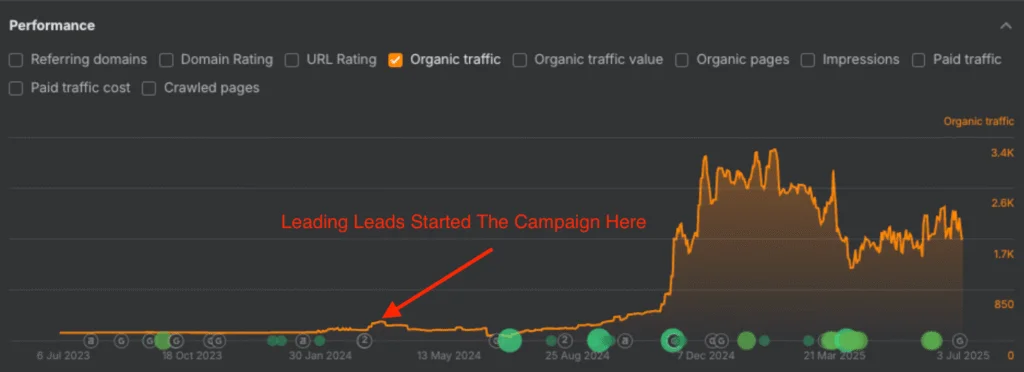The Objective
Our primary goal was to transform an underperforming e-commerce site into a powerful, self-sustaining sales engine. We aimed to activate SEO as a primary growth channel, driving high-intent organic traffic for baking ingredient-related keywords and converting that traffic into significant, measurable revenue.

The Website History
The client, an e-commerce business in the food niche, had a website that was effectively a digital dead end. With virtually zero non-branded traffic (only 20 visitors per month), no backlinks, and thin product page content, it was invisible to potential customers and generated no sales. The owner knew they had a great product but felt the constant, crushing anxiety of having a business that was failing online.
The Issues
The website wasn’t just underperforming; it was fundamentally broken from an SEO perspective. The client was at a breaking point, investing time and money into a website that gave nothing back. The core issues included:
- No Online Visibility: The site was generating almost no organic traffic, making it impossible to attract new customers.
- Flawed Technical Foundation: The website suffered from a chaotic, non-logical URL structure, making it difficult for Google to understand and rank its pages.
- Weak On-Page SEO: Critical elements like SEO-optimised content, logical internal linking, and product schema were completely absent, leaving conversion potential on the table.
Course of Action: Building a Bulletproof SEO Foundation
While many agencies chase shiny objects, we know that transformational results come from mastering the fundamentals. The single most important factor that moved this campaign forward was rebuilding the website’s core architecture and on-page strategy from the ground up. This isn’t a “quick fix”; it’s the permanent solution to owning your growth.
Here is a comprehensive guide on how you can implement this same foundational strategy.
Your website’s structure is its skeleton. If the bones are in the wrong place, nothing else will function correctly. A logical structure makes it easy for both users and Google to navigate your site, find what they need, and understand how your pages relate to one another.
Why It’s Critical: A messy structure confuses Google’s crawlers, which can lead to poor indexing and lower rankings. For users, a clean hierarchy means an effortless experience, which builds trust and boosts conversions.
How to Fix It (Step-by-Step):
- Map Your Hierarchy: Start with broad categories at the top and get more specific as you go down. For an e-commerce site selling baking ingredients, it should look like this:
- yourdomain.com/baking-ingredients/ (Main Category)
- yourdomain.com/baking-ingredients/flours/ (Sub-Category)
- yourdomain.com/baking-ingredients/flours/almond-flour (Product Page)
- Create SEO-Friendly URLs: Your URLs should be clean, descriptive, and include your primary keyword.
- Bad: yourdomain.com/cat/p?id=123_prod
- Good: yourdomain.com/baking-ingredients/sugars/brown-sugar
- Implement 301 Redirects: If you are changing old, messy URLs to new, clean ones, you MUST implement 301 redirects. This tells Google that the page has permanently moved, passing any existing authority to the new URL and preventing users from hitting a “404 Not Found” error.

Keyword cannibalization happens when multiple pages on your site compete for the same keyword. This confuses Google, forcing it to choose which page is more relevant—and often, it chooses wrong, or neither page ranks well. Keyword clustering prevents this by assigning a unique, targeted group of keywords to a single page.
Why It’s Critical: By giving each page a clear and distinct purpose, you consolidate your authority and tell Google exactly which page to rank for a specific search query.
How to Do It (Step-by-Step):
- Conduct Keyword Research: Use tools like Ahrefs or SEMrush to find all the relevant keywords for your products.
- Group Keywords by Intent: Group keywords that share the same user intent. For example:
- Cluster 1 (Category Page): “baking flours,” “buy flour online,” “types of flour” -> Target your main /flours/ category page.
- Cluster 2 (Product Page): “almond flour,” “buy almond flour,” “gluten-free almond flour” -> Target your specific /almond-flour/ product page.
- Map Clusters to Pages: Assign one primary keyword cluster to each page on your website. This becomes the North Star for your content creation, meta titles, and H1 tags for that page.
- Create SEO-Optimised Content: Write comprehensive, helpful product and category descriptions using the keywords from your assigned cluster. Answer the questions your customers are asking. Don’t just list features; explain the benefits.
Internal linking is how you connect your pages and spread “link equity” (or authority) throughout your site. A reverse silo is a powerful strategy where your most authoritative pages (like blog posts or guides) link down to support your most important commercial pages (your product and category pages).
Why It’s Critical: This strategy funnels authority from informational content to the pages that actually make you money. It establishes topical relevance, telling Google that you are an expert on a subject and that your product pages are the ultimate destination for a user ready to buy.
How to Do It (Step-by-Step):
- Identify Your “Money” Pages: These are your key product and category pages that you want to rank.
- Create Supporting Content: Write helpful blog posts or guides related to your products. For example, a blog post titled “The 5 Best Gluten-Free Flours for Baking Cookies.”
- Link Strategically: Within that blog post, whenever you mention a product like “almond flour,” create a link directly to your almond flour product page using descriptive anchor text (e.g., “our premium almond flour”). This sends a powerful signal to Google and a ready-to-buy customer directly to the point of purchase.

The Results
By relentlessly focusing on these foundational principles, we turned a failing website into a revenue-generating machine. The results speak for themselves.
| Metric | Before Campaign | After 12 Months | Improvement |
| Monthly Organic Traffic | 20 Visitors | 2,000+ Visitors | +9,900% |
| Annual Online Sales | ~$860 | $94,000+ | +10,850% |
| New Customers via SEO | 142 (YoY) | 20,000+ (YoY) | +4,547% |
| Items Purchased via SEO | – | – | +12,580% (YoY) |


Key Takeaway
Success in SEO isn’t about chasing silver bullets; it’s about mastering the fundamentals. A flawlessly executed technical and on-page foundation is non-negotiable. By building a logical site architecture and creating content with clear intent, you create a powerful asset that Google can’t help but reward, turning your website from a cost centre into your most profitable salesperson.
Ready to Own Your Growth?
Tired of your website being a digital dead end? If you’re ready to stop guessing and start building a predictable engine for leads and sales, it’s time for a conversation. We’re selective about our partners, but if you’re a long-term thinker ready to invest in owning your growth, we’re the right team to get you there.
